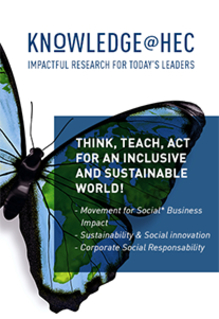Career resilience to mitigate the stress arising from uncertainty
Squiggly, stop-start, hi-potential, clear trajectory, hustles, gig working, full-time, part-time; what best describes your career? Our careers today are not linear – we can change careers up to seven times during our working lives. Change creates immense opportunities but can also be quite overwhelming, particularly when inundated with too many options. We need clarity over what drives our choices.
The pandemic has created exogenous shocks to the organizations – challenging the heart of how we work. As a result of recurring lockdowns, the ongoing debate about working from home, the stop-start processes have created significant uncertainty and stress at work. It is hardly surprising that one of the buzzwords over the last two years has been resilience, particularly the importance of career resilience.
Resilience is our ability to adapt to stress and adversity. We adapt through our reactions, learning new behaviors and actions. To mitigate the stress arising from uncertainty, career resilience can help identify opportunities and navigate your career.
Aligning purpose and career to gain momentum
Over the last few years, during the pandemic, we experienced the effects of work and personal lives merging without foresight or forward planning.
In a recent event with Gwen Hines, CEO of Save the Children UK, and Nazreen Visram, Head of Charities for Barclays Bank, the discussion on purposeful leadership focused on the overlap be-tween work and personal lives and the impact on how we work. Purpose aligned with a career can be a powerful driver to achieve momentum. However, as Nazreen Visram highlights, outputs still need to be aligned with organizational goals. This means having valid measurements in place to track progress; in other words, what gets measured gets done.
Resilience to prevent burnout
Other complexities have risen to the surface, such as multiple generations working together, bringing different expectations and perspectives into the workplace. This can provide opportunities for creative discussions on work. However, this situation can create tension when teams are under pressure to deliver under challenging circumstances and colleagues are not aligned. This leads to burnout and fatigue. Understanding resilience and integrating it into your career is essential to reduce the risk of burnout.
Developing resilience involves taking a different approach to our working and personal lives.
As CEO of Save the Children, Gwen Hines is very familiar with the demands of colleagues and volunteers working in challenging situations under intense emotional pressure to protect children. Developing resilience is an essential skill for individuals working in these situations. During the pandemic, these humanitarian skills and behaviors were shared with frontline staff in the UK health sector to help reduce the impact of burnout on individuals. Nurturing resilience helps individuals withstand stressful situations, but handling emotions also create conditions to shift thinking to find opportunities.
Teaching our brains resilience
Resilience is not something you have or don't have; it's learned over time thanks to our brains' neuroplasticity. Building memories of recovery and retrieving these experiences helps to strengthen neural connections that support resilience. The speed of signals between our prefrontal cortex and the amygdala (where our memories are stored) determines how quickly our brains recover from a turbulent or stressful experience. The more neurons (white matter) between the prefrontal cortex and amygdala, the greater our resilience.
Developing resilience involves taking a different approach to our working and personal lives. Resilience is more than just getting back on track. It's how we learn to recover successfully and become more robust. In the book I recently co-authored with Dr. Naeema Pasha, we explain the critical building blocks of career resilience-building:
• Positive self-view: how you assess your skills and ability to move forward.
• Adaptability and risk: how you respond to changes and become comfortable with the chance of failure.
• Self-reliance: proactivity and autonomy in generating new ideas and actions.
• Ambition and networking: creating connections beyond your immediate network.
• Motivation to learn: commitment to ongoing re-skilling to adapt to innovation and new practices.
Each of these areas requires conscious attention consistently. When handling turbulent and complex situations, the default can be to get through from one emergency to the next without developing specific patterns or ways of thinking about the situation.
Making a conscious effort to strengthen resilience
HEC Paris in Qatar alumna Amy Johnson, CEO, A and B ME Holding, shares her experiences of developing resilience during the pandemic: "You can’t treat the every day the same way. I believe that when you’re going through something as challenging as we all went through, every day should be treated uniquely. It is going to be different, and that’s okay. You realize that you don’t have the rules for every single day. And if you don’t adapt, if you don’t adjust, you’re dead in the water because there are too many curveballs hitting you every day." For Johnson, a vital resource was her team and maintaining the relationships through remote working: "When you're forced to work on Zoom, you realize communication and being honest with each other is imperative. One person doesn’t have all the answers and isn’t available all the time. I had some incredible team members alongside me during the pandemic that helped to keep delivering results despite the challenges we all faced."
While handling work, Johnson and her husband also juggled home-schooling with four small children. Johnson extends the importance of teamwork at home: "Every morning before the kids woke up, my husband and I would talk through how we would manage and get through the day. This allowed us to review what had worked and what hadn't worked the previous day and gave us space to think about what we needed to do differently, particularly when a lot of things felt out of our control."
Johnson shares what she does that strengthens the building blocks of career resilience: "I take time every week to focus on myself. I'm keeping an eye on my focus and planning time. Today the decisions I make are more conscious, more selfish, and sometime still one day at a time. Being resilient both personally and professionally takes practice and is a journey. Try, adapt, grow, adjust and repeat has been my recipe for success."








